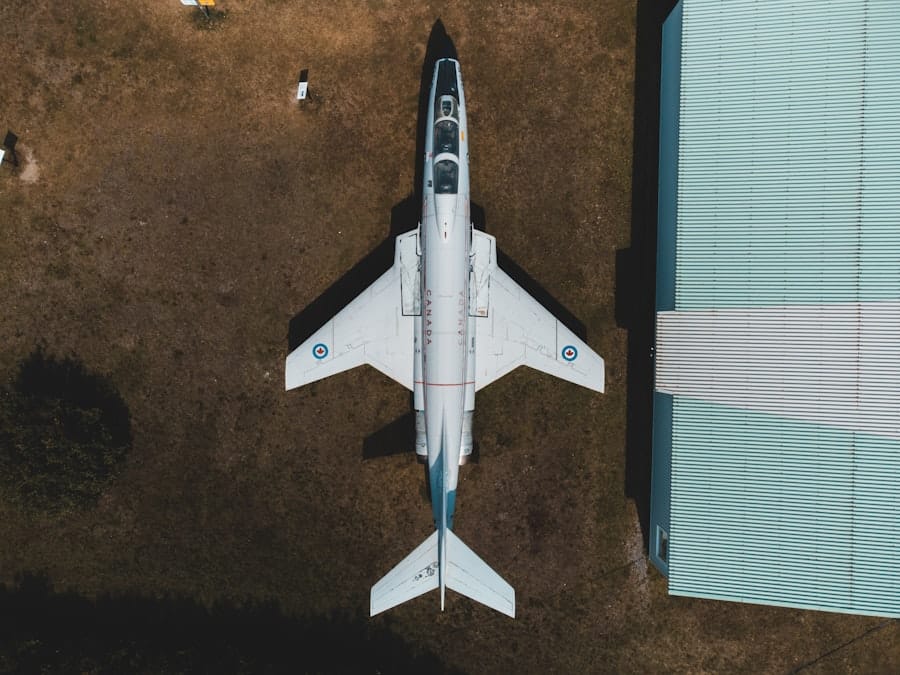Aerospace data encompasses a vast array of information collected from various platforms, including satellites, aircraft, and drones. This data is pivotal in understanding and monitoring the Earth’s systems, providing insights that are crucial for a multitude of applications across different sectors. The advent of advanced technologies in aerospace engineering and data analytics has significantly enhanced our ability to gather, process, and interpret this information.
From high-resolution imagery to real-time telemetry, aerospace data serves as a cornerstone for decision-making in fields ranging from environmental science to urban development. The significance of aerospace data extends beyond mere observation; it plays a critical role in shaping policies, driving innovations, and improving operational efficiencies. As the world becomes increasingly interconnected, the demand for accurate and timely data has surged.
This has led to the proliferation of satellite constellations and the integration of aerospace data into everyday applications. The implications of this data are profound, influencing everything from climate change research to disaster response strategies. Understanding the breadth and depth of aerospace data is essential for harnessing its full potential in addressing contemporary challenges.
Key Takeaways
- Aerospace data plays a crucial role in various industries on Earth, providing valuable insights and information.
- Satellite imagery is instrumental in agriculture and environmental monitoring, aiding in crop management and conservation efforts.
- Aerospace data is revolutionizing transportation and logistics, optimizing routes and improving efficiency.
- Urban planning and infrastructure development benefit from the utilization of aerospace data, enabling better decision-making and resource allocation.
- Aerospace data is essential for weather forecasting and disaster management, helping to mitigate risks and improve preparedness.
The Impact of Aerospace Data on Earth’s Industries
Aerospace data has transformed numerous industries by providing insights that were previously unattainable. In agriculture, for instance, precision farming techniques have emerged as a direct result of satellite imagery and aerial surveys. Farmers can now monitor crop health, soil conditions, and water usage with unprecedented accuracy.
This data-driven approach allows for optimized resource allocation, reducing waste and increasing yields. The integration of aerospace data into agricultural practices not only enhances productivity but also contributes to sustainable farming by minimizing environmental impacts. In the realm of energy, aerospace data plays a crucial role in resource management and exploration.
For example, oil and gas companies utilize satellite data to identify potential drilling sites and monitor environmental compliance. Wind and solar energy sectors also benefit from aerospace data through the assessment of site viability based on weather patterns and geographical features. The ability to analyze large datasets enables these industries to make informed decisions that enhance operational efficiency and reduce costs.
As industries continue to evolve, the reliance on aerospace data will only deepen, driving innovation and fostering economic growth.
The Role of Satellite Imagery in Agriculture and Environmental Monitoring

Satellite imagery has revolutionized the way we approach agriculture and environmental monitoring. High-resolution images captured from space provide farmers with detailed insights into crop conditions, enabling them to make timely interventions. For instance, multispectral imaging can detect variations in plant health that are invisible to the naked eye, allowing for targeted application of fertilizers or pesticides.
This precision not only boosts crop yields but also minimizes chemical runoff into surrounding ecosystems, promoting environmental sustainability. Beyond agriculture, satellite imagery is instrumental in monitoring environmental changes on a global scale. It allows scientists to track deforestation rates, assess the health of coral reefs, and monitor the effects of climate change on polar ice caps.
For example, NASA’s Landsat program has been pivotal in providing continuous data on land use changes since the 1970s. This long-term dataset enables researchers to analyze trends over time, informing conservation efforts and policy decisions aimed at mitigating environmental degradation.
How Aerospace Data is Revolutionizing Transportation and Logistics
The transportation and logistics sectors are undergoing a significant transformation due to the integration of aerospace data. Advanced tracking systems powered by satellite technology enable real-time monitoring of cargo shipments, enhancing supply chain transparency and efficiency. Companies can now optimize routes based on traffic patterns, weather conditions, and other variables, leading to reduced delivery times and lower operational costs.
For instance, logistics giants like FedEx and UPS leverage aerospace data to streamline their operations, ensuring that packages reach their destinations promptly.
These technologies rely heavily on precise geolocation data and aerial mapping to navigate urban environments safely.
Companies such as Amazon are exploring drone delivery systems that utilize aerospace data to identify optimal flight paths while avoiding obstacles. This innovation not only promises faster delivery times but also has the potential to reduce carbon emissions associated with traditional ground transportation methods. As the logistics landscape continues to evolve, the role of aerospace data will be central to driving efficiency and sustainability.
Utilizing Aerospace Data for Urban Planning and Infrastructure Development
Urban planning is increasingly reliant on aerospace data to create smarter, more sustainable cities. Geographic Information Systems (GIS) powered by aerial imagery allow planners to visualize urban growth patterns, assess land use, and identify areas in need of infrastructure improvements. For example, cities can analyze traffic patterns captured through aerial surveys to design more efficient public transportation systems or improve road networks.
This data-driven approach ensures that urban development aligns with the needs of residents while minimizing environmental impacts. Additionally, aerospace data aids in disaster preparedness and response within urban settings. By utilizing satellite imagery to map vulnerable areas prone to flooding or landslides, city planners can implement proactive measures to mitigate risks.
During emergencies, real-time aerial surveillance provides critical information for first responders, enabling them to allocate resources effectively. The integration of aerospace data into urban planning not only enhances safety but also fosters resilience against climate-related challenges.
The Importance of Aerospace Data in Weather Forecasting and Disaster Management

Weather forecasting has been revolutionized by advancements in aerospace data collection methods. Satellites equipped with sophisticated sensors provide meteorologists with real-time information about atmospheric conditions across vast regions. This data is crucial for predicting severe weather events such as hurricanes, tornadoes, and blizzards.
For instance, the National Oceanic and Atmospheric Administration (NOAA) relies on satellite observations to issue timely warnings that save lives and property during extreme weather events. In disaster management, aerospace data plays a vital role in both preparedness and response efforts. After a natural disaster strikes, aerial imagery can assess damage levels across affected areas quickly.
This information is invaluable for coordinating relief efforts and allocating resources where they are needed most. For example, during the aftermath of Hurricane Harvey in 2017, aerial surveys provided critical insights into flooding patterns that informed rescue operations and recovery planning. The ability to harness aerospace data in disaster scenarios enhances situational awareness and improves overall response effectiveness.
Aerospace Data and its Influence on Communication and Connectivity
The influence of aerospace data extends into the realm of communication and connectivity as well. Satellite technology has transformed global communications by enabling internet access in remote areas where traditional infrastructure is lacking. Companies like SpaceX are launching satellite constellations designed to provide high-speed internet access worldwide, bridging the digital divide between urban centers and rural communities.
This connectivity is essential for education, healthcare, and economic development in underserved regions. Furthermore, aerospace data facilitates advancements in telecommunications by improving signal transmission and network reliability. Satellite-based communication systems are crucial for emergency services during disasters when terrestrial networks may be compromised.
The ability to maintain communication links through satellite technology ensures that first responders can coordinate effectively during crises. As the demand for global connectivity continues to rise, the role of aerospace data in enhancing communication infrastructure will become increasingly significant.
The Future of Aerospace Data and its Potential for Innovation
Looking ahead, the future of aerospace data holds immense potential for innovation across various sectors. As technology continues to advance, we can expect even more sophisticated methods for collecting and analyzing aerospace data. The emergence of small satellites—often referred to as CubeSats—has democratized access to space-based data collection, allowing startups and research institutions to contribute valuable insights without the prohibitive costs associated with traditional satellite missions.
Moreover, advancements in artificial intelligence (AI) and machine learning are poised to revolutionize how we interpret aerospace data. These technologies can analyze vast datasets at unprecedented speeds, uncovering patterns that may not be immediately apparent to human analysts. For instance, AI algorithms can enhance predictive modeling in agriculture by analyzing historical weather patterns alongside satellite imagery to forecast crop yields more accurately.
As we continue to explore the possibilities offered by aerospace data, interdisciplinary collaboration will be key to unlocking its full potential. By integrating insights from fields such as environmental science, urban planning, transportation logistics, and telecommunications, we can develop innovative solutions that address complex global challenges. The future landscape shaped by aerospace data promises not only enhanced efficiency but also a more sustainable approach to managing our planet’s resources.
In the article “Why Aerospace Data Is Driving New Industries on Earth,” the transformative impact of aerospace data on various sectors is explored, highlighting its potential to revolutionize industries beyond its traditional boundaries. A related piece that complements this discussion is Boost Your Content with NeuronWriter: SEO & NLP Optimization. This article delves into how advanced data processing and optimization tools, like NeuronWriter, are enhancing content creation and digital marketing strategies. Both articles underscore the importance of leveraging sophisticated data analytics to drive innovation and efficiency across diverse fields, illustrating a broader trend of data-driven transformation in today’s digital landscape.
FAQs
What is aerospace data?
Aerospace data refers to the information collected from various sources such as satellites, aircraft, and other aerospace technologies. This data includes a wide range of information such as weather patterns, environmental changes, and geographical mapping.
How is aerospace data driving new industries on Earth?
Aerospace data is driving new industries on Earth by providing valuable insights and information that can be used in various sectors such as agriculture, urban planning, transportation, and environmental monitoring. This data is being used to develop innovative solutions and technologies that can improve efficiency and sustainability in these industries.
What are some examples of industries being impacted by aerospace data?
Industries such as agriculture are using aerospace data to monitor crop health and optimize irrigation, while urban planning is using this data for city mapping and infrastructure development. Transportation industries are using aerospace data for route optimization and traffic management, and environmental monitoring industries are using this data to track climate change and natural disasters.
How is aerospace data collected?
Aerospace data is collected through various means such as satellites, drones, and aircraft equipped with sensors and cameras. These technologies capture and transmit data back to Earth, where it is processed and analyzed for various applications.
What are the benefits of using aerospace data for Earth-based industries?
The benefits of using aerospace data for Earth-based industries include improved efficiency, better decision-making, and the ability to address environmental and societal challenges. This data can also lead to the development of new technologies and solutions that can drive economic growth and sustainability.

